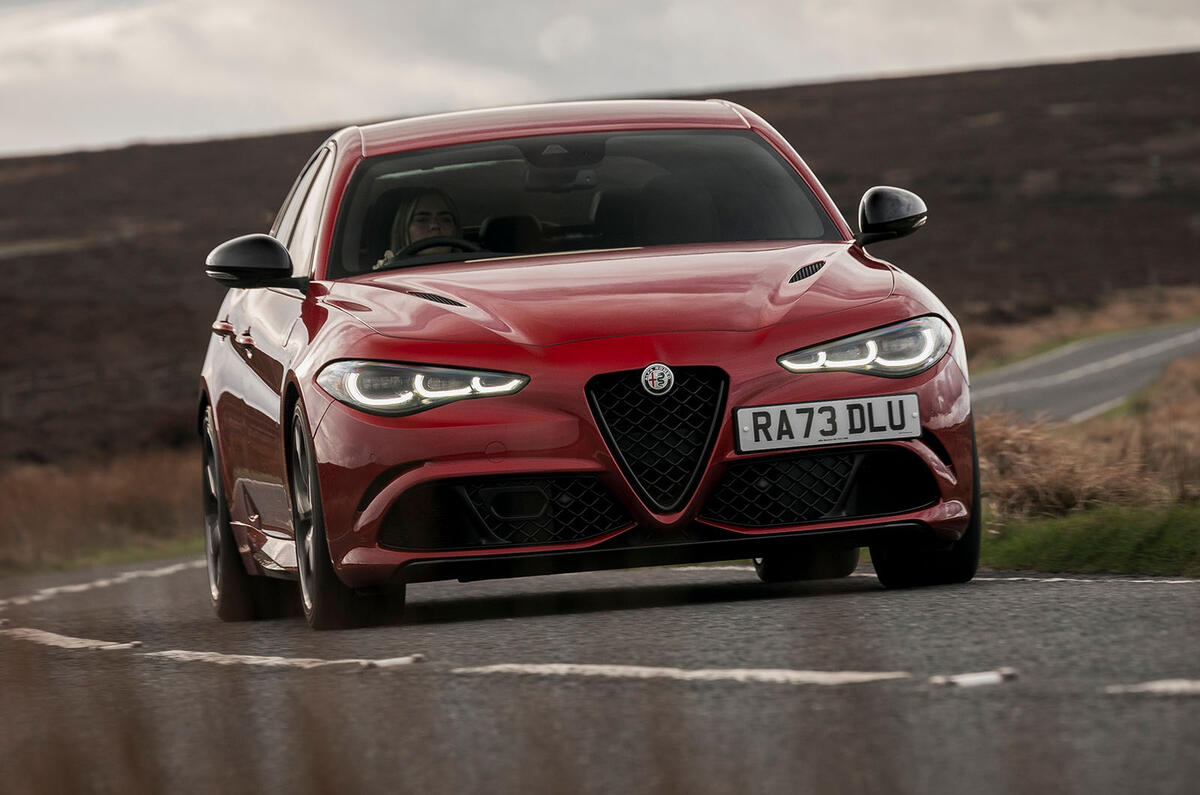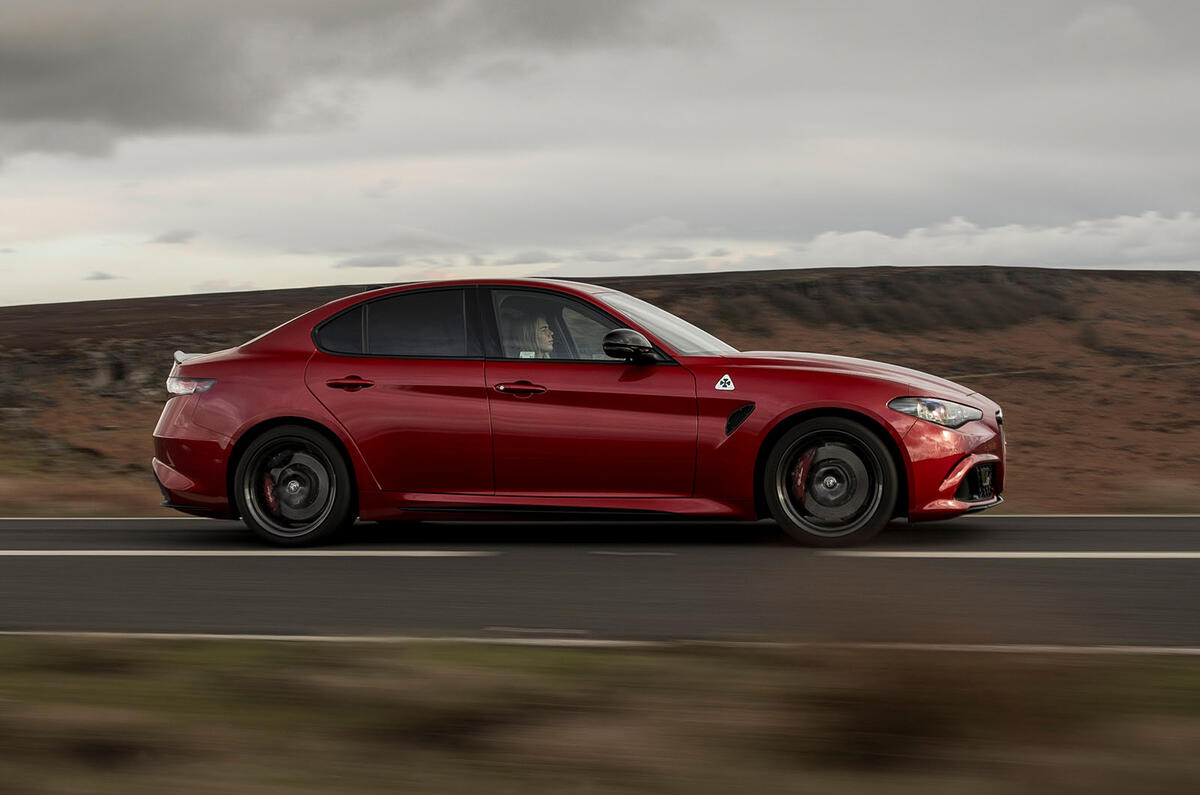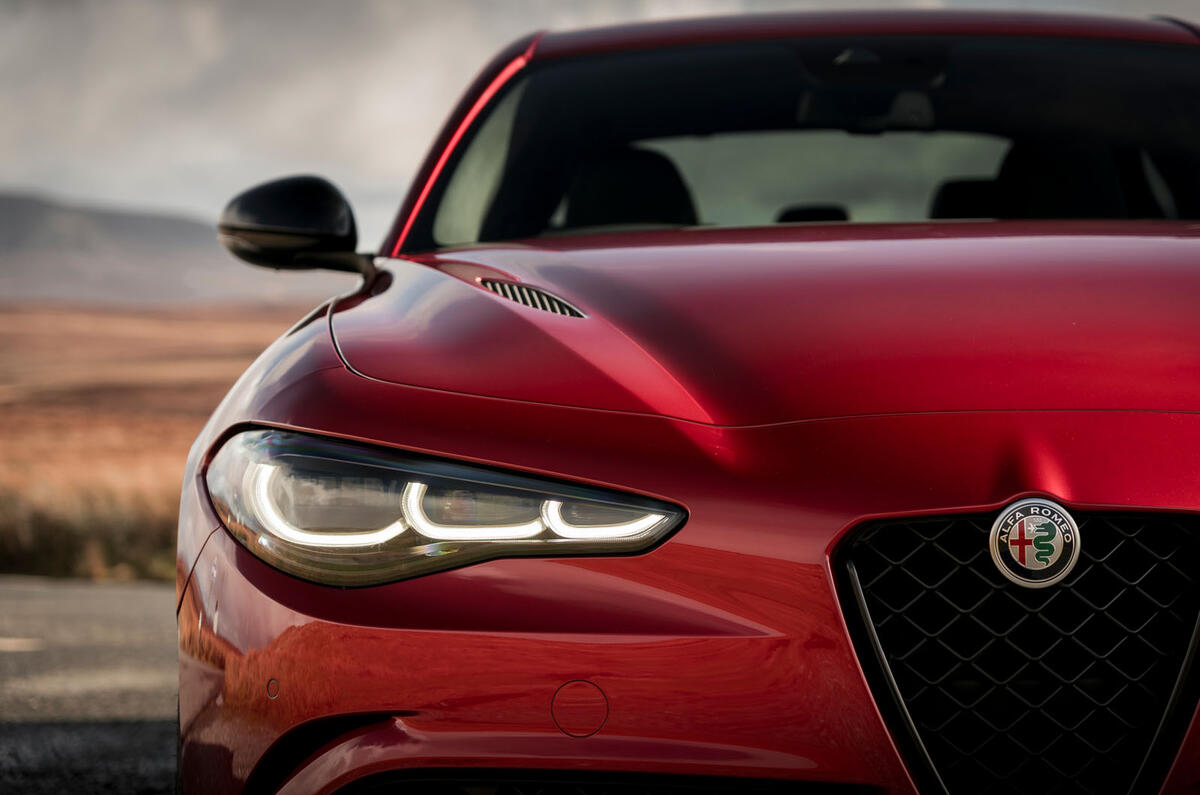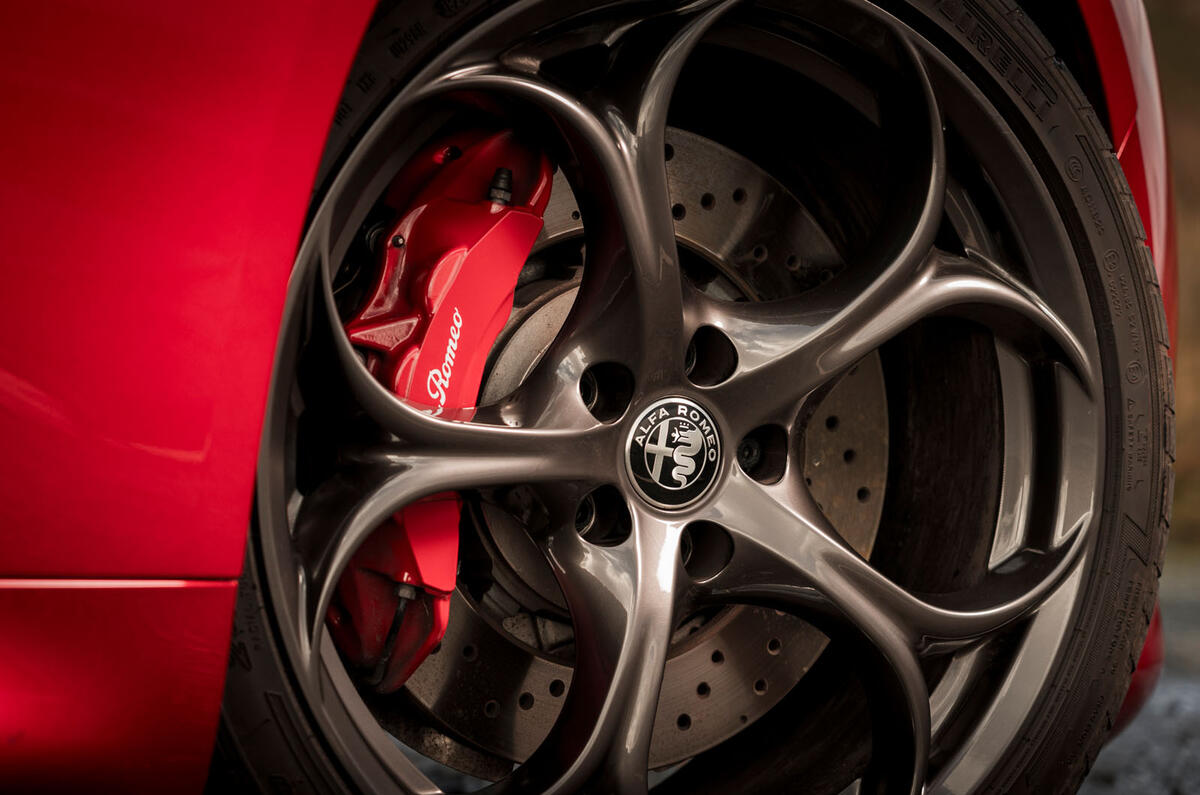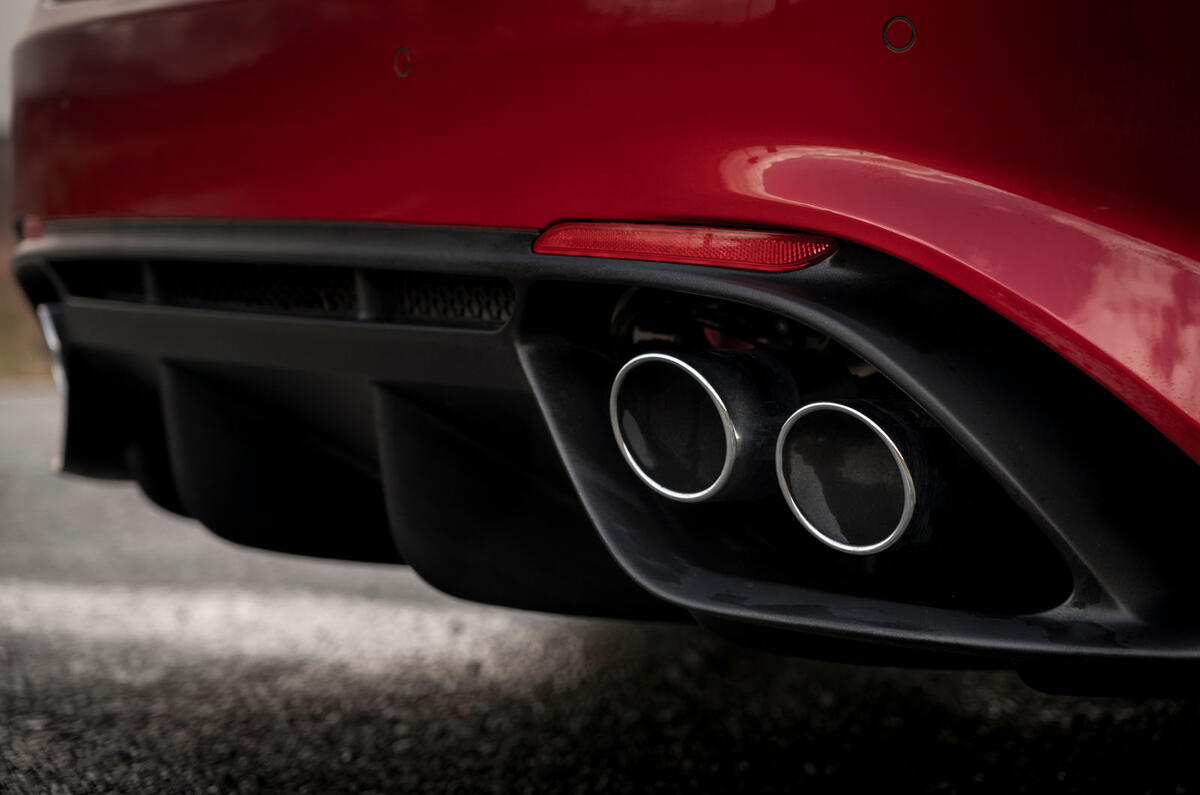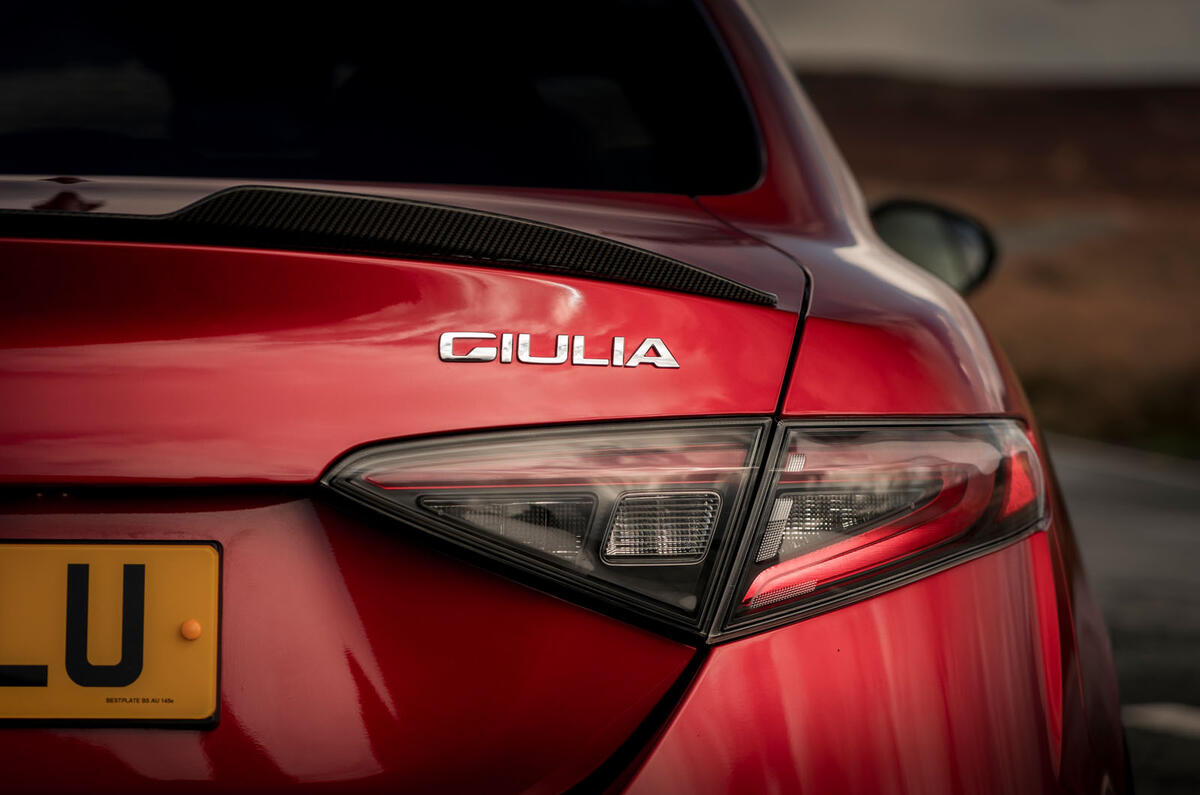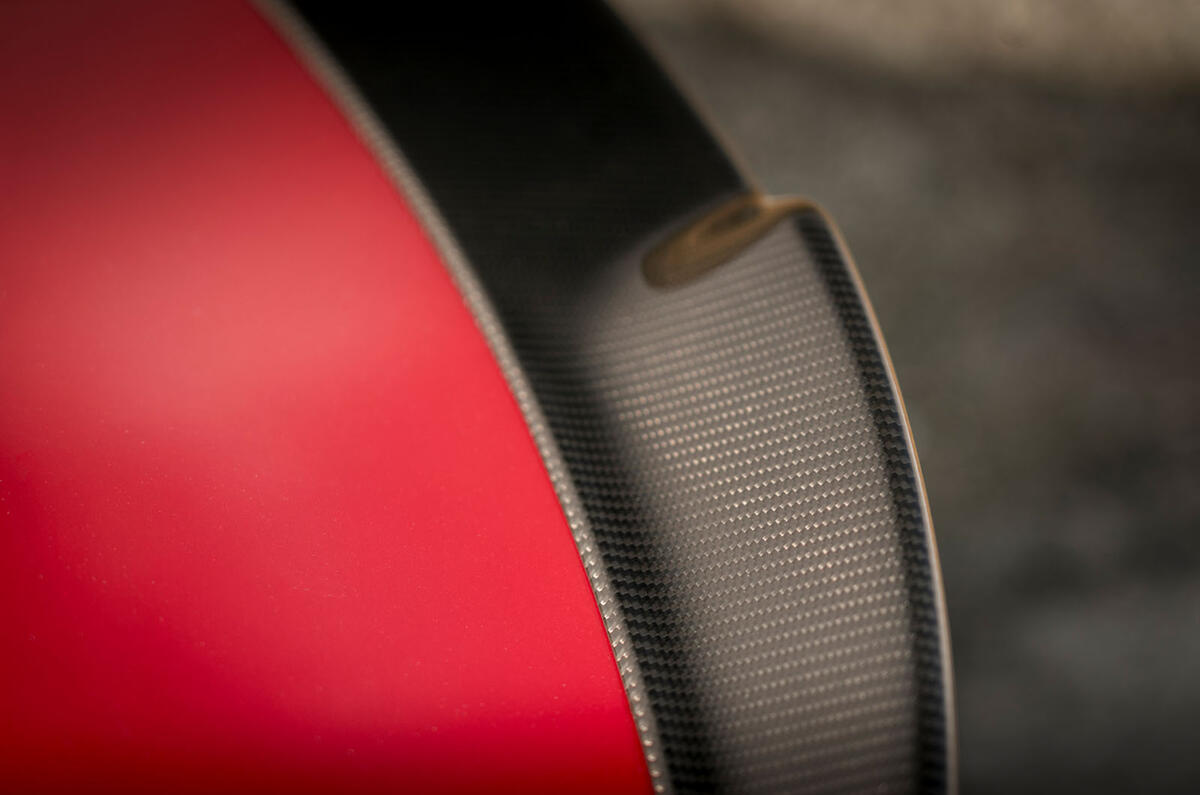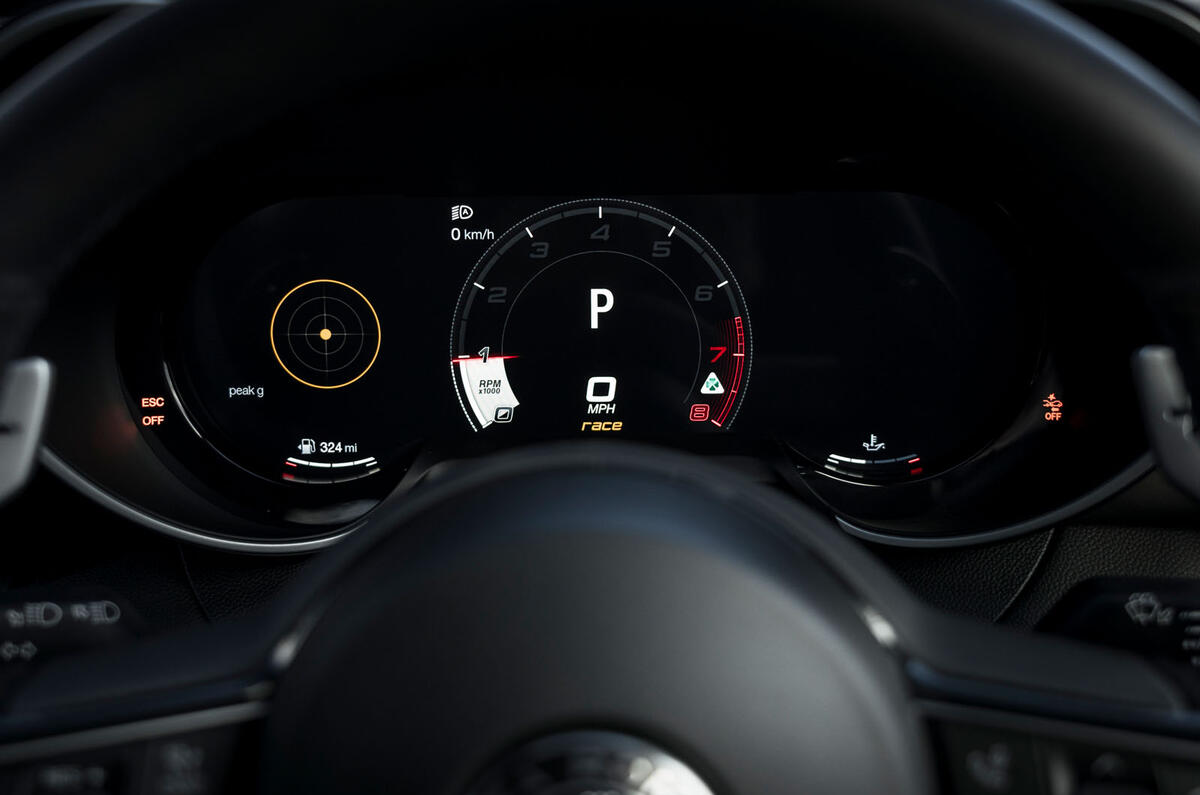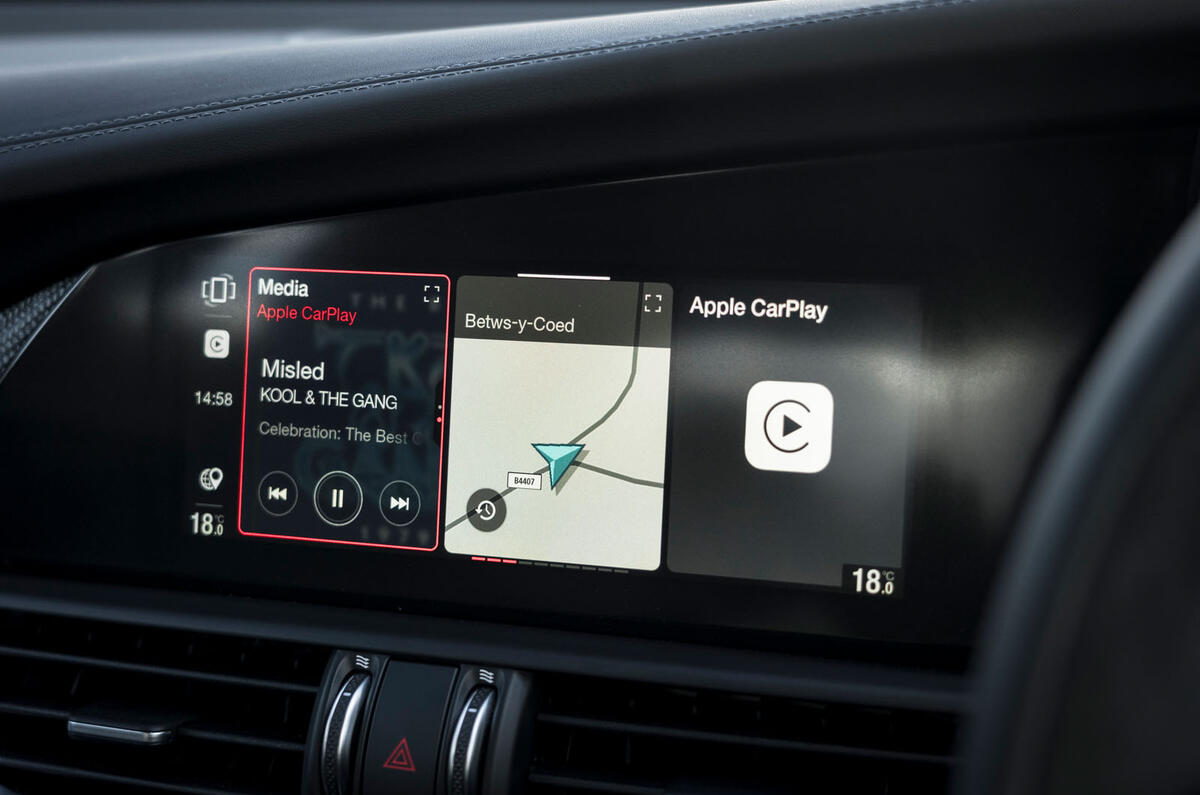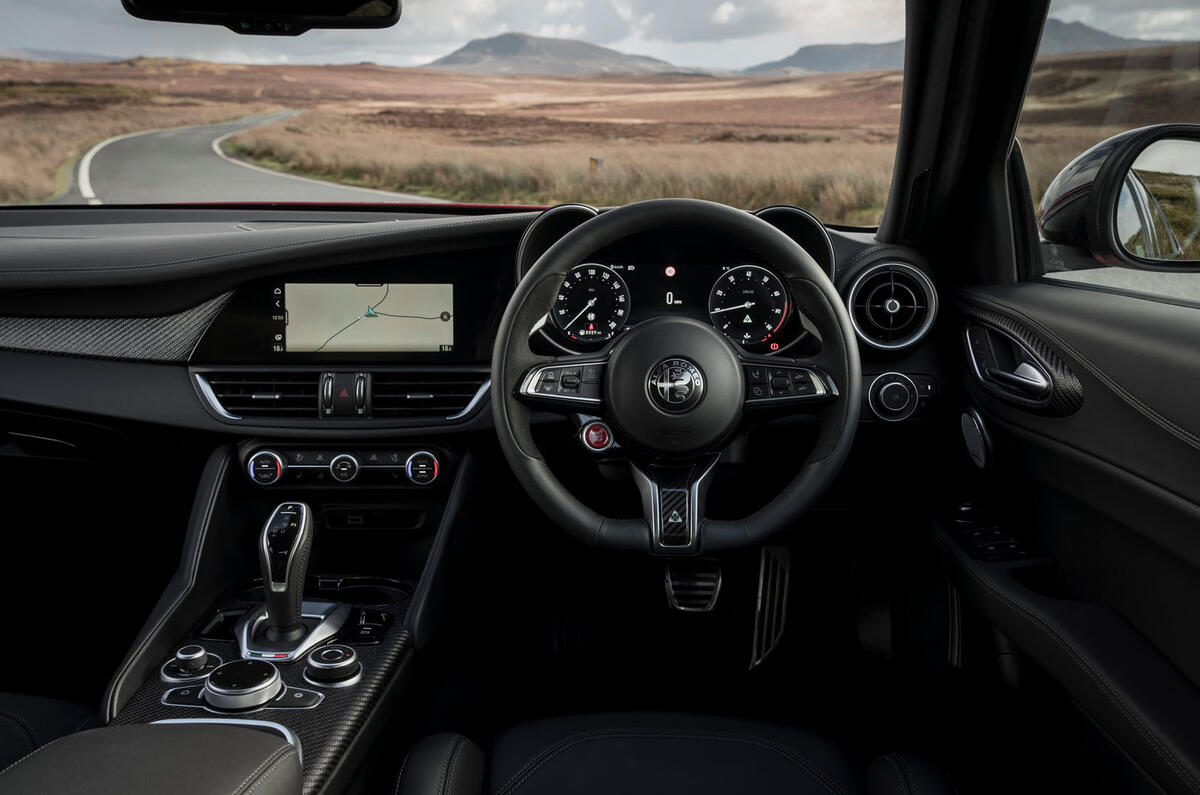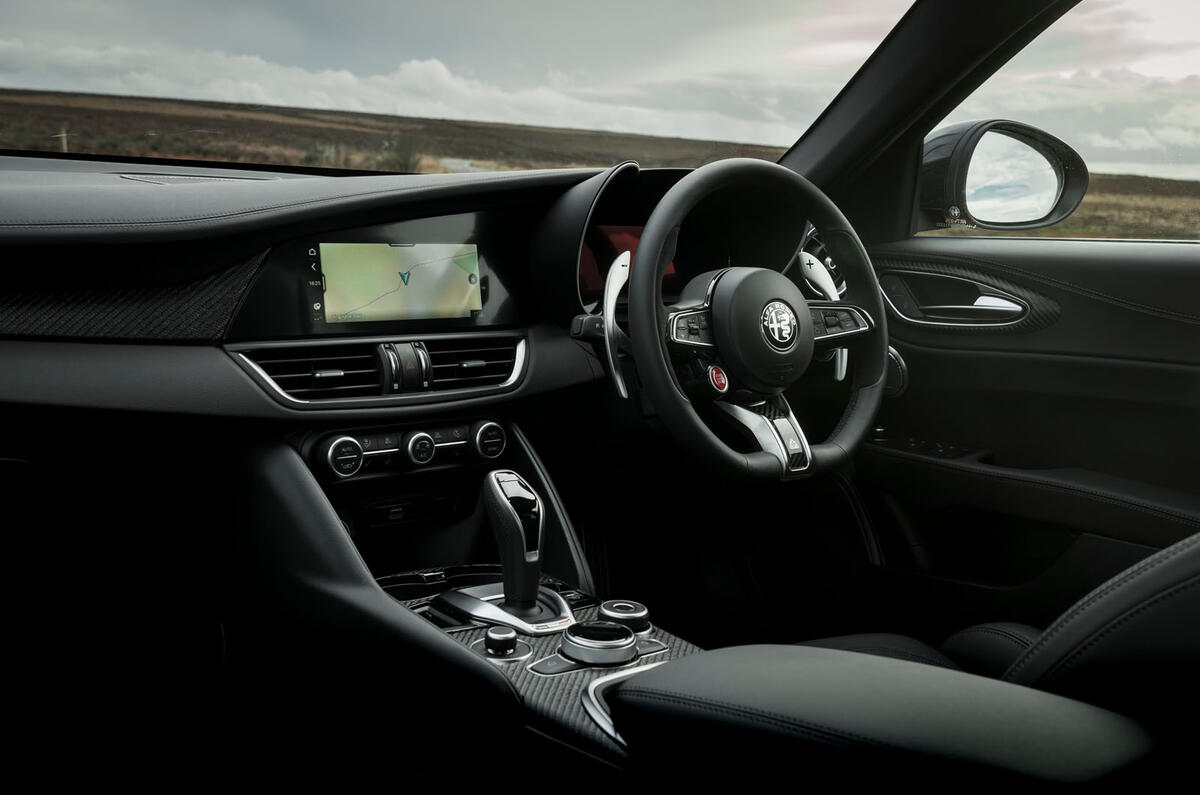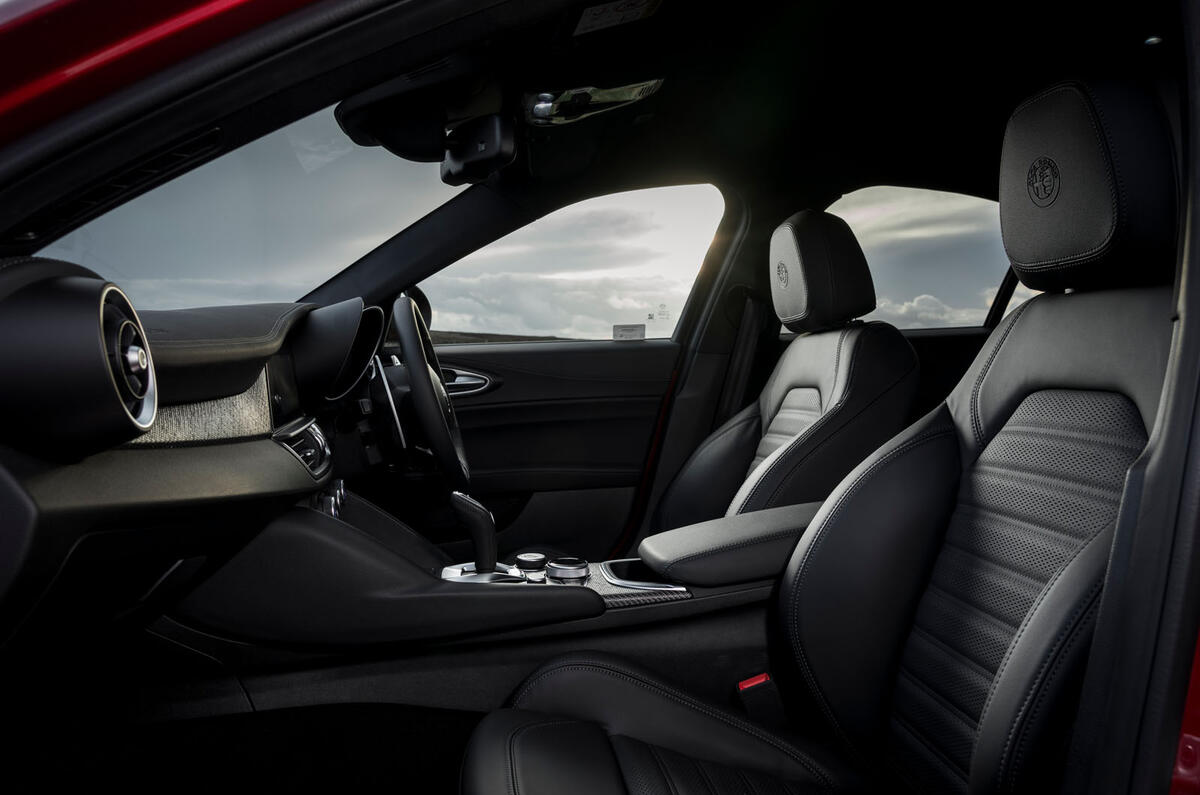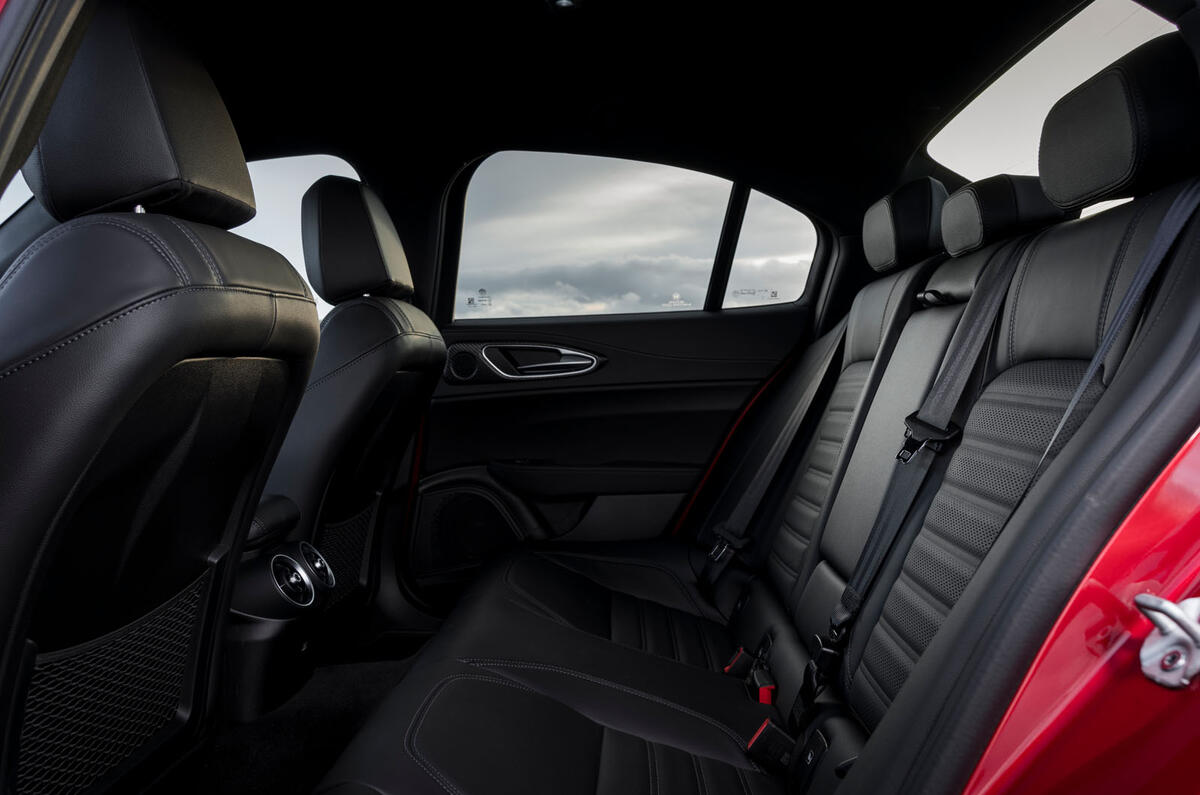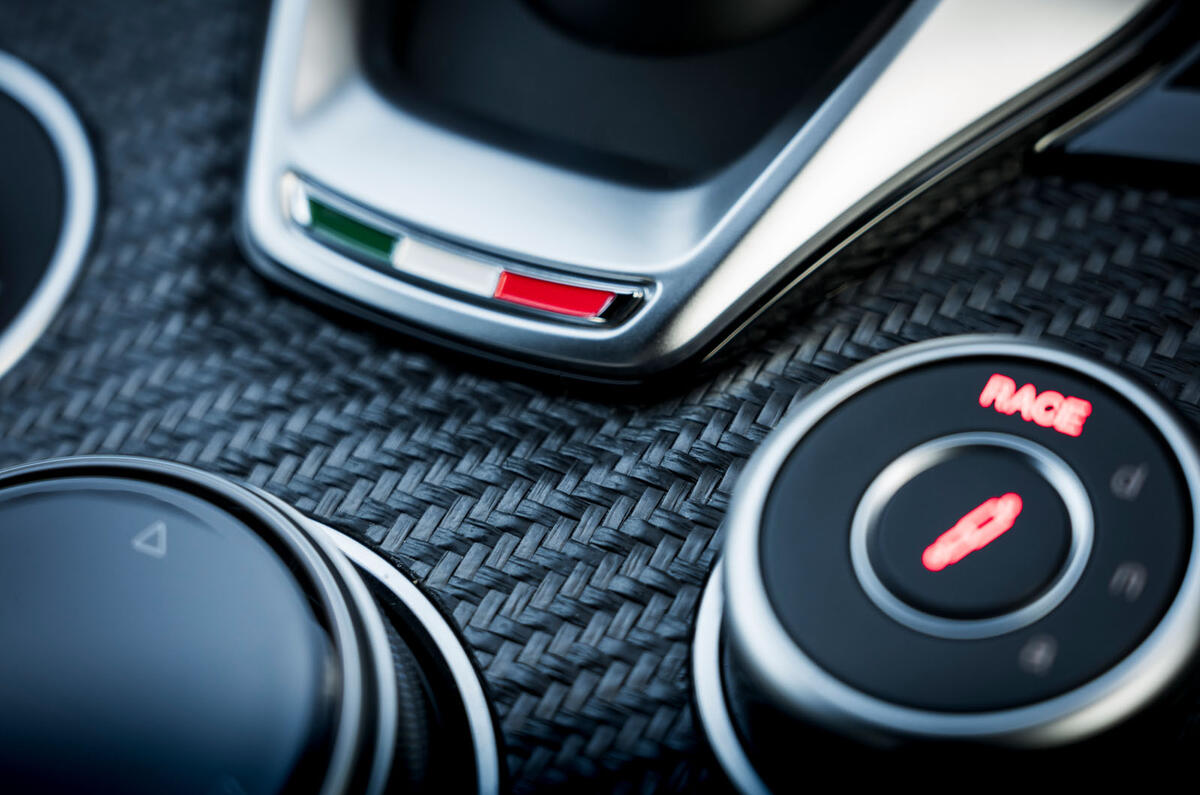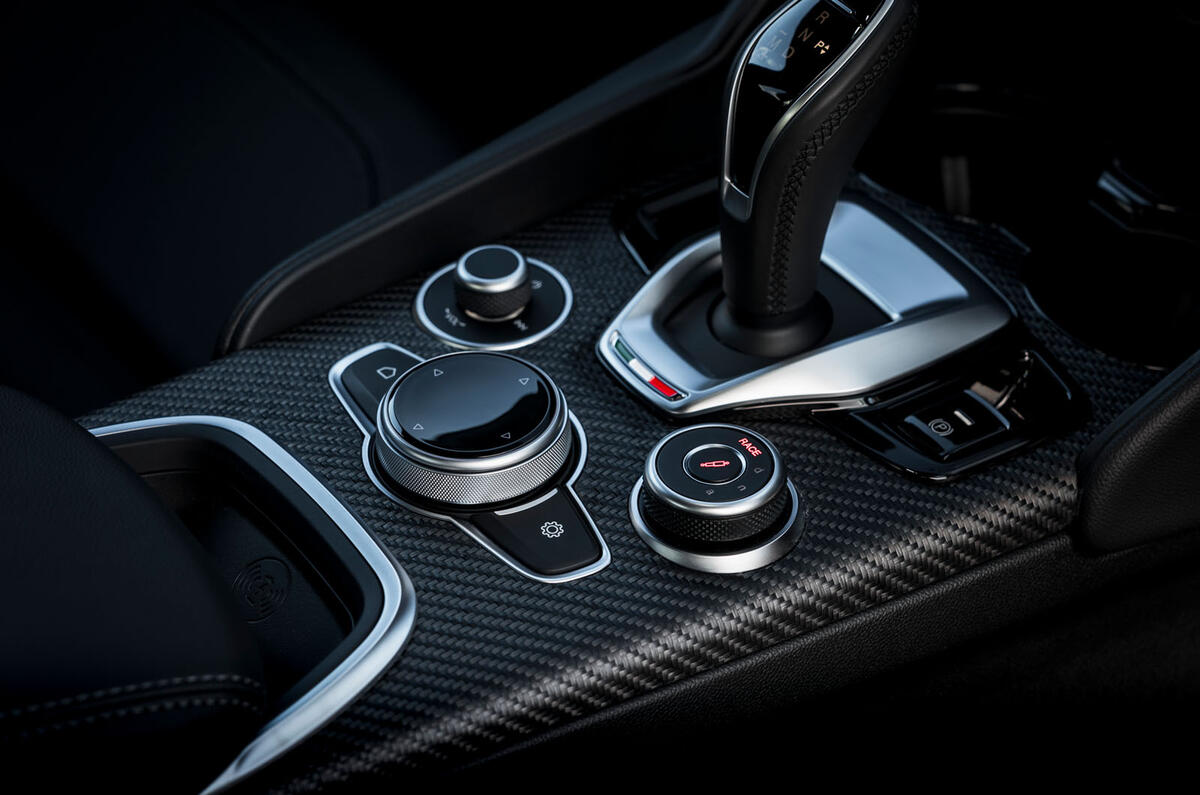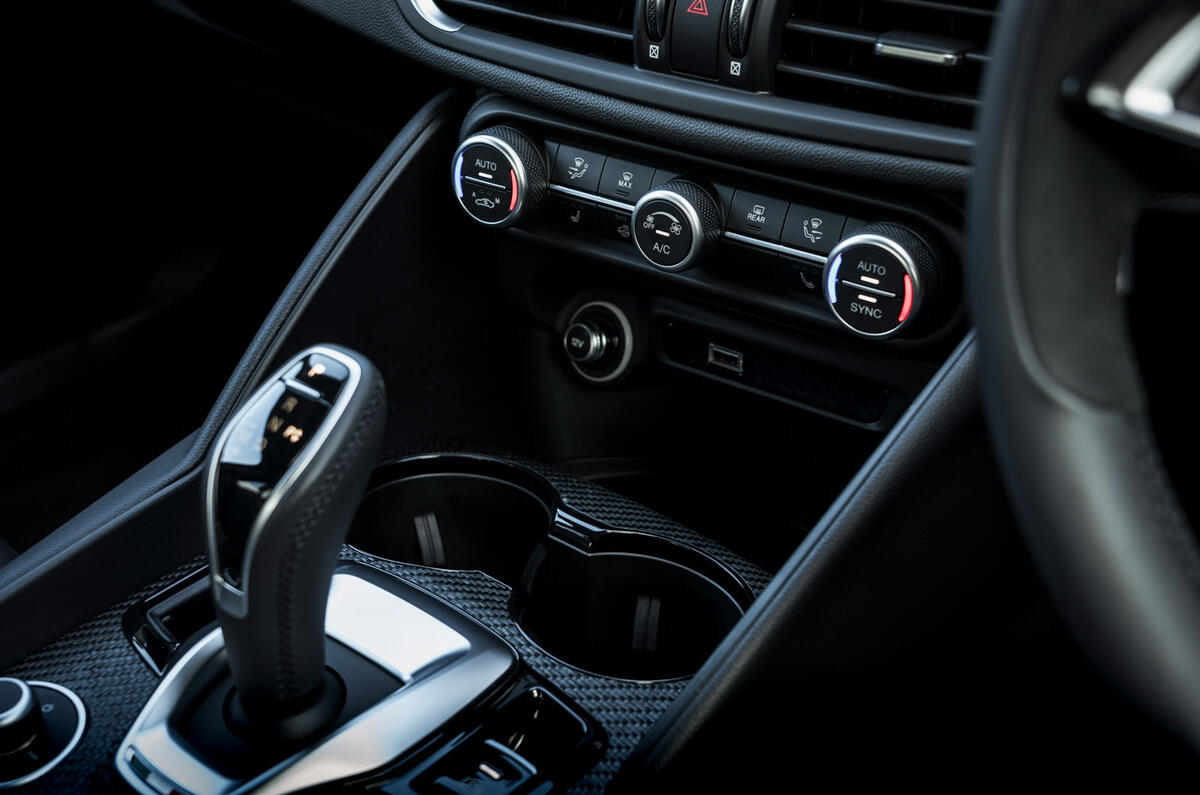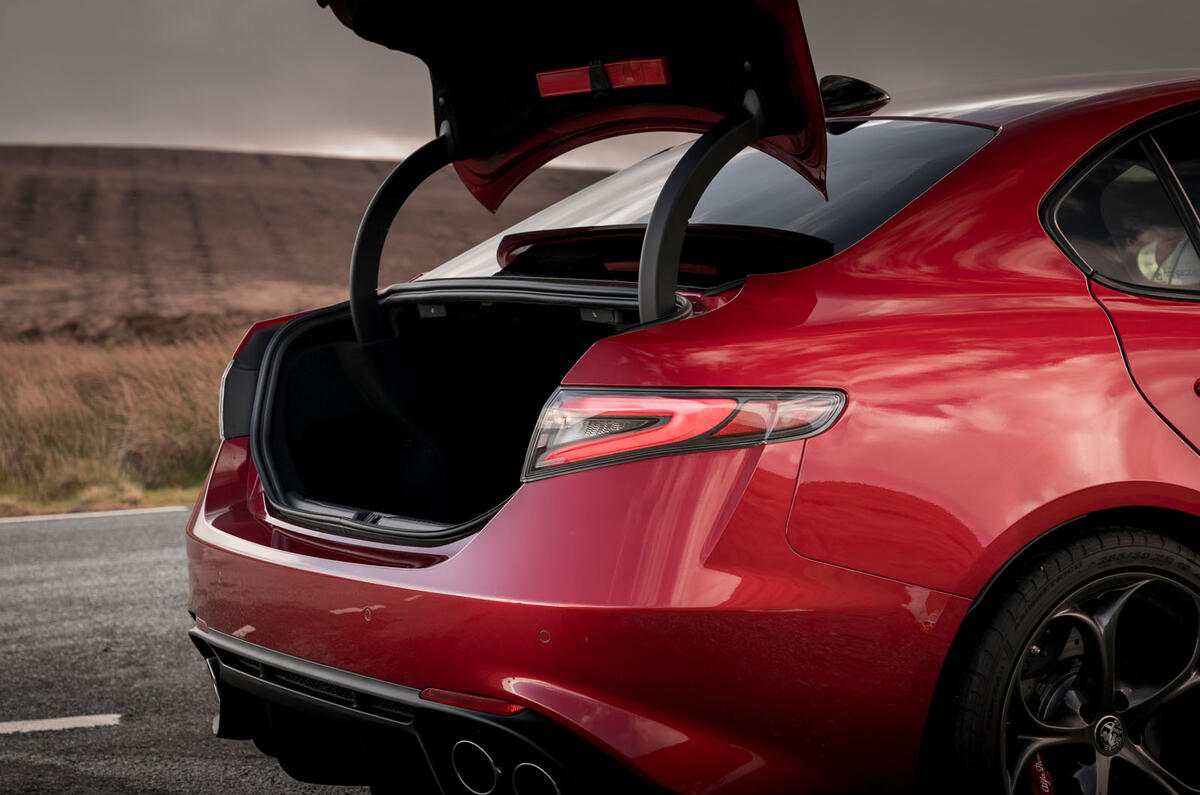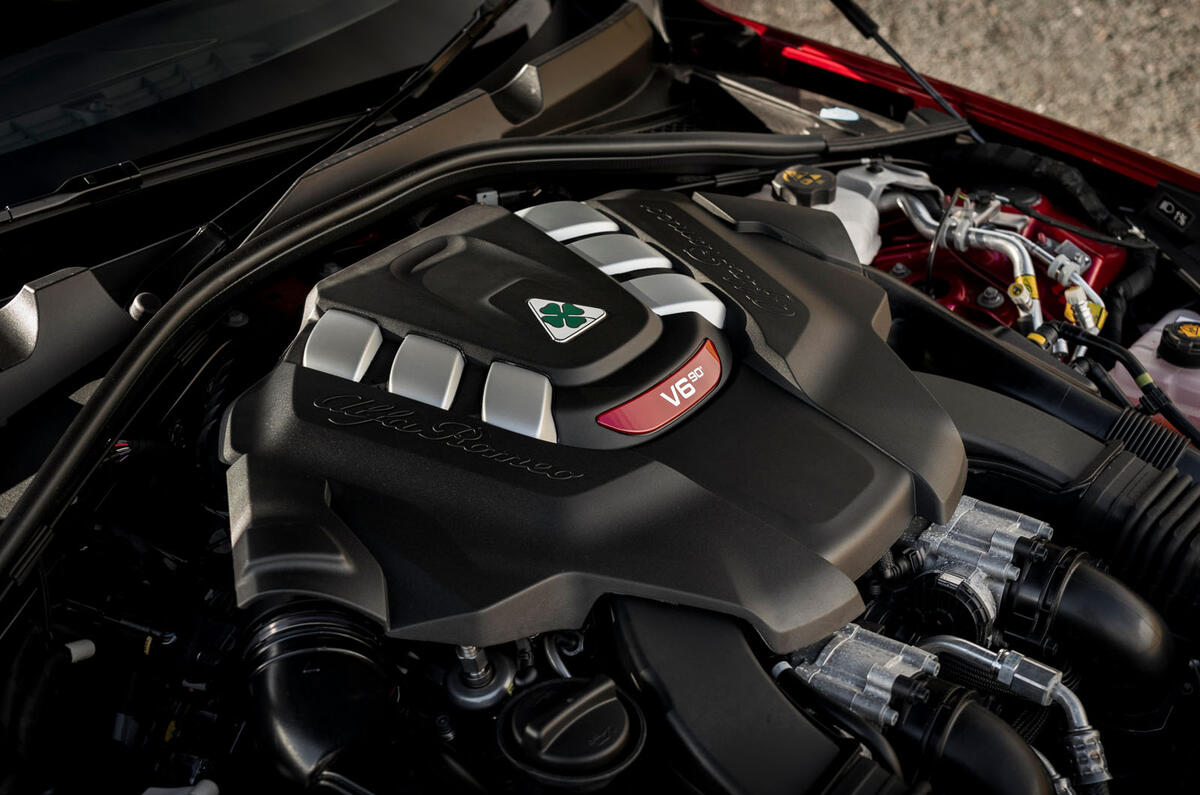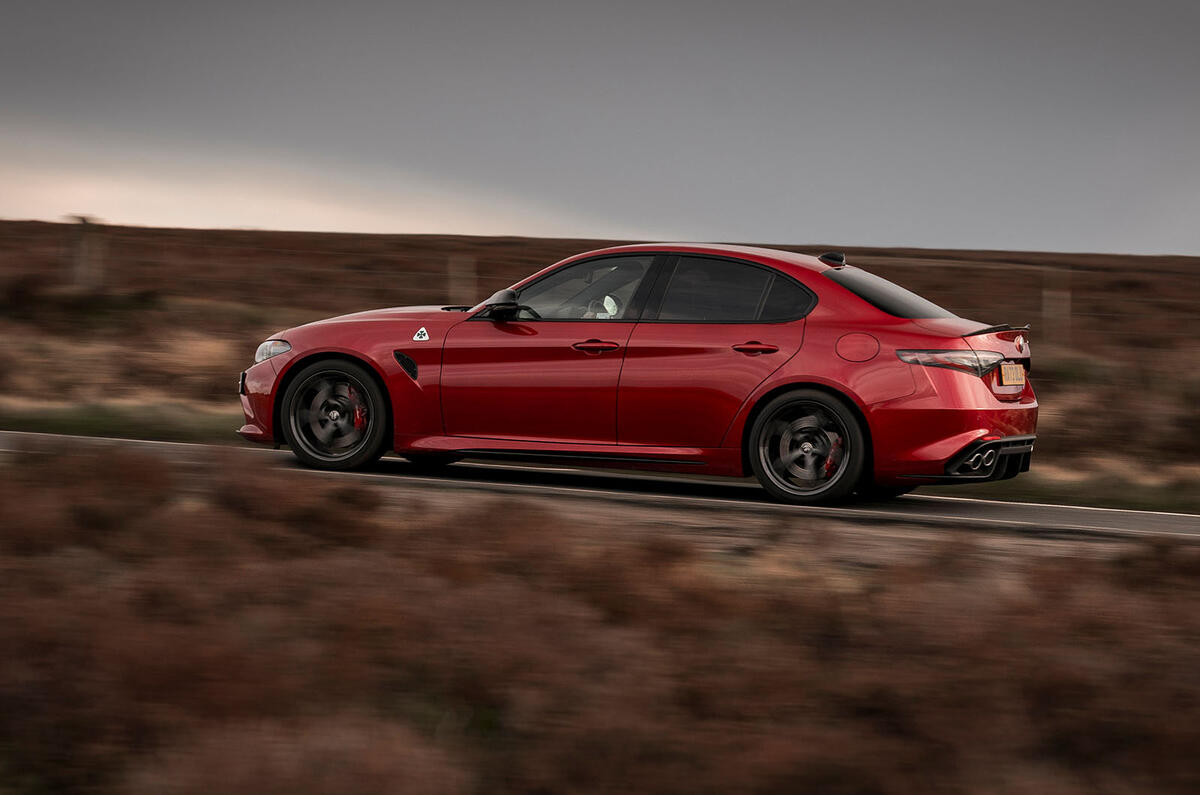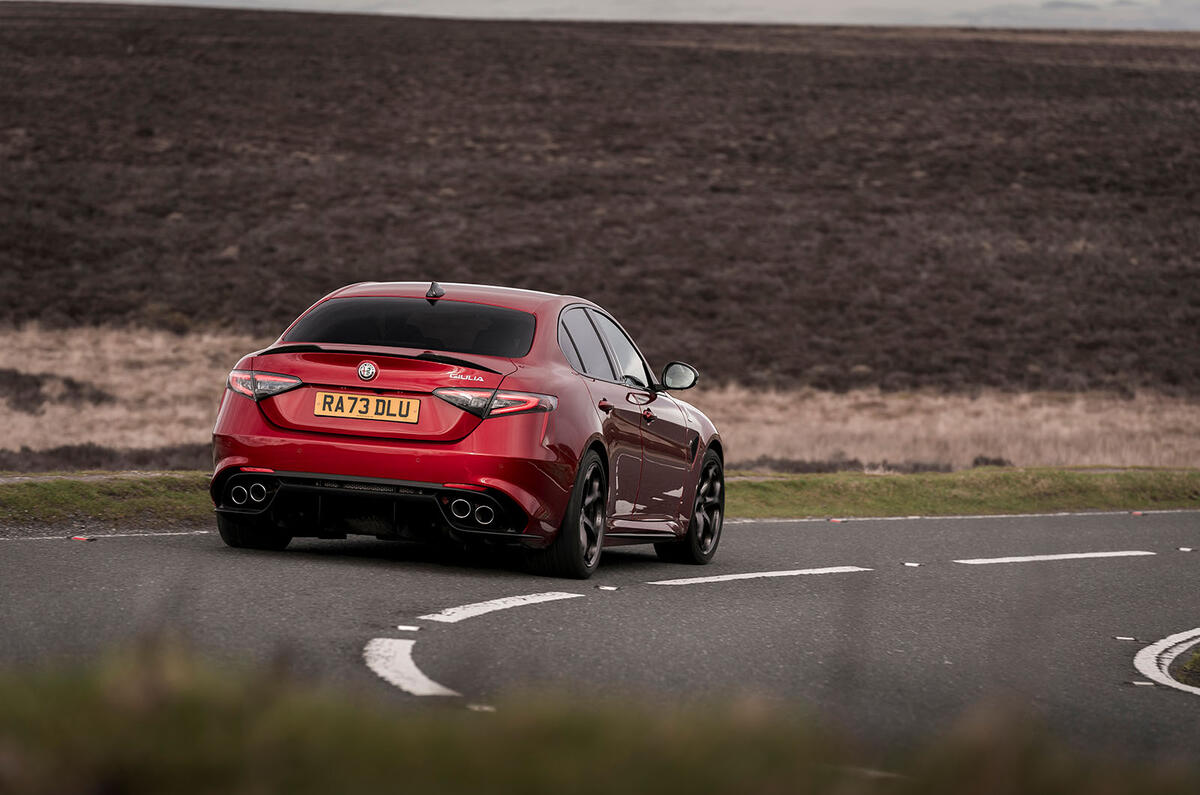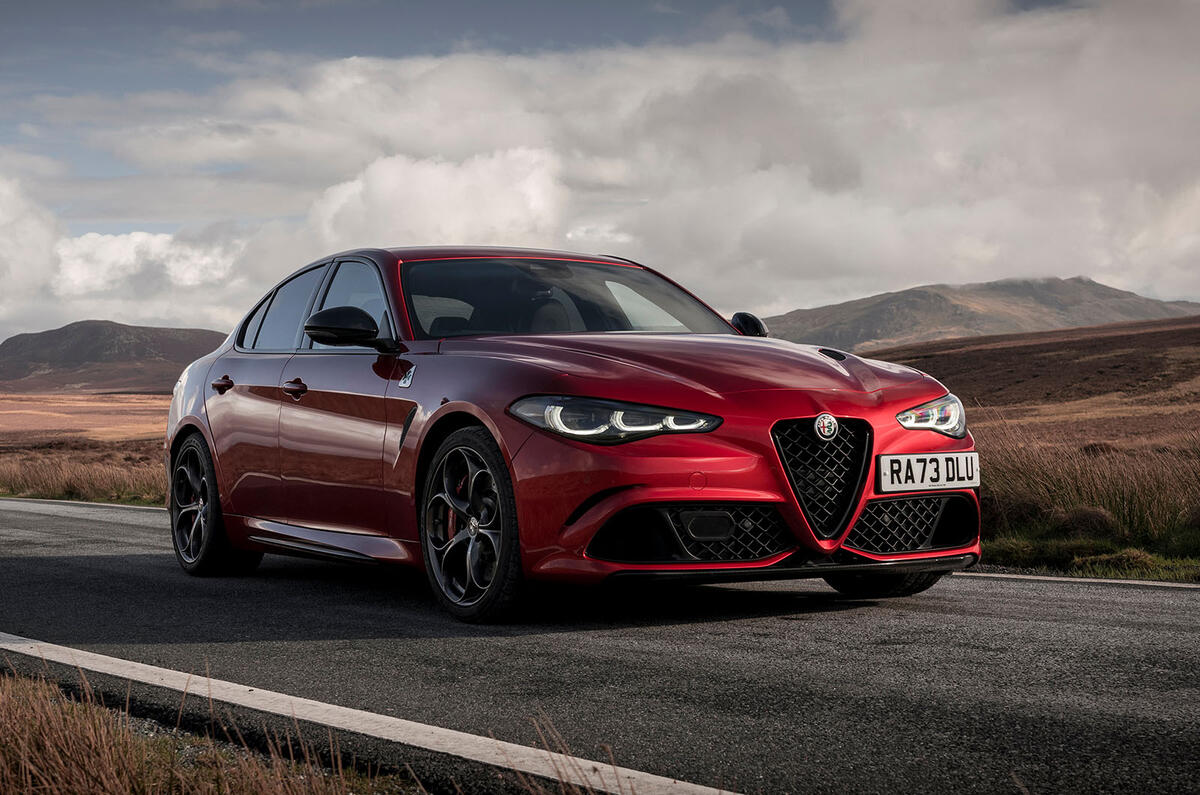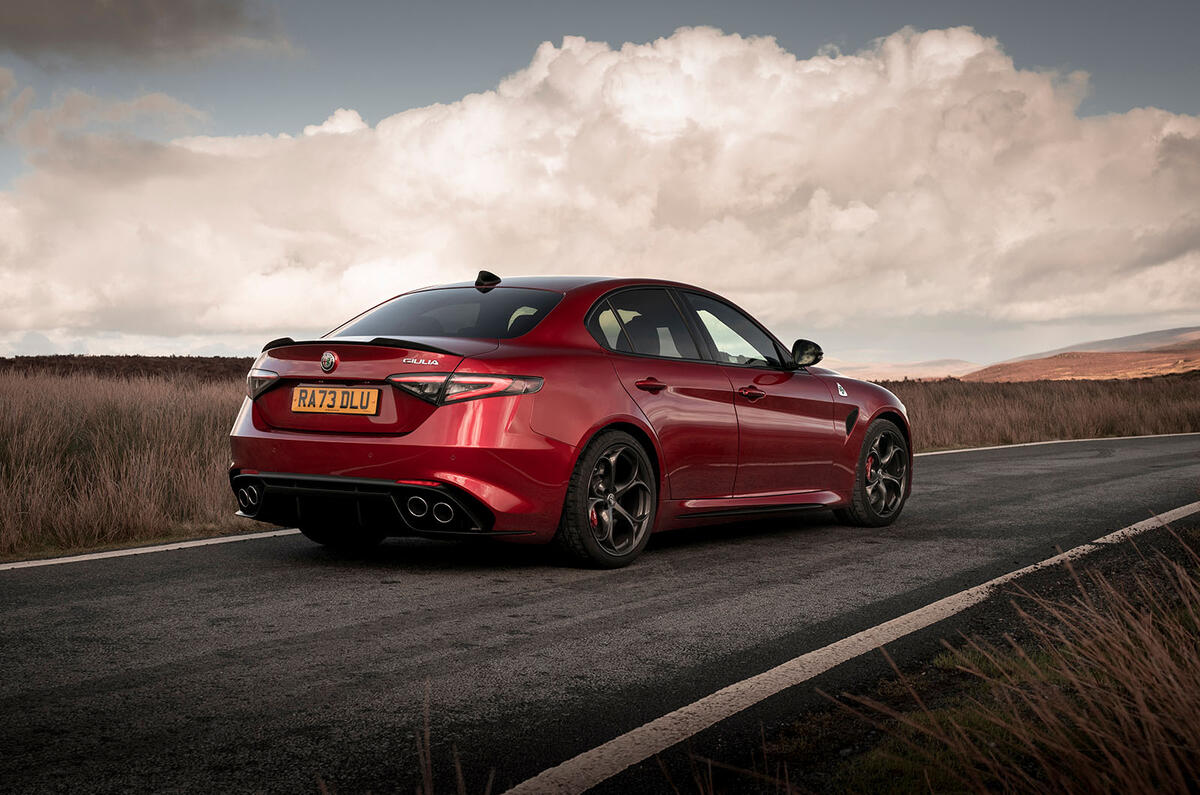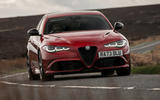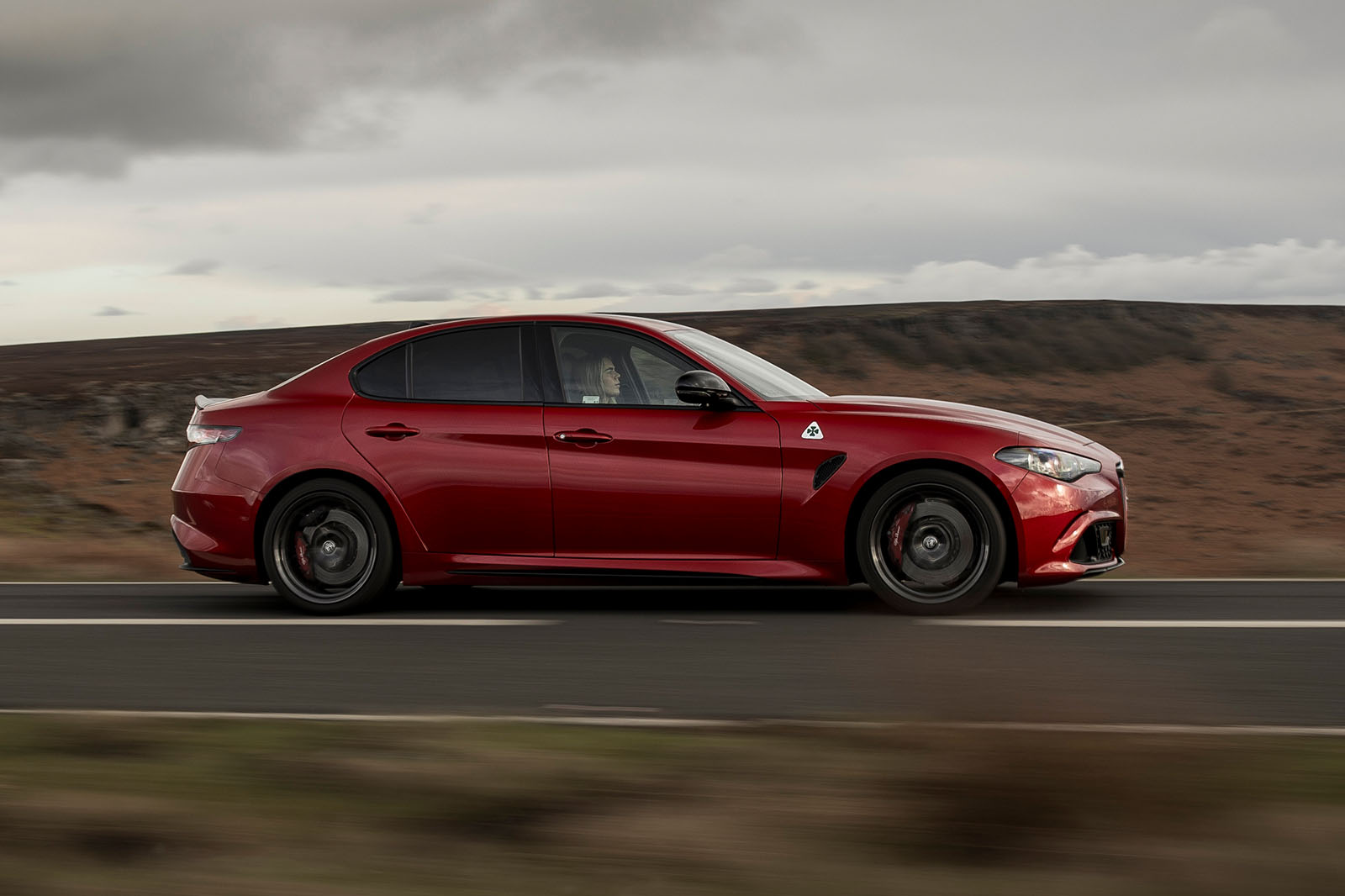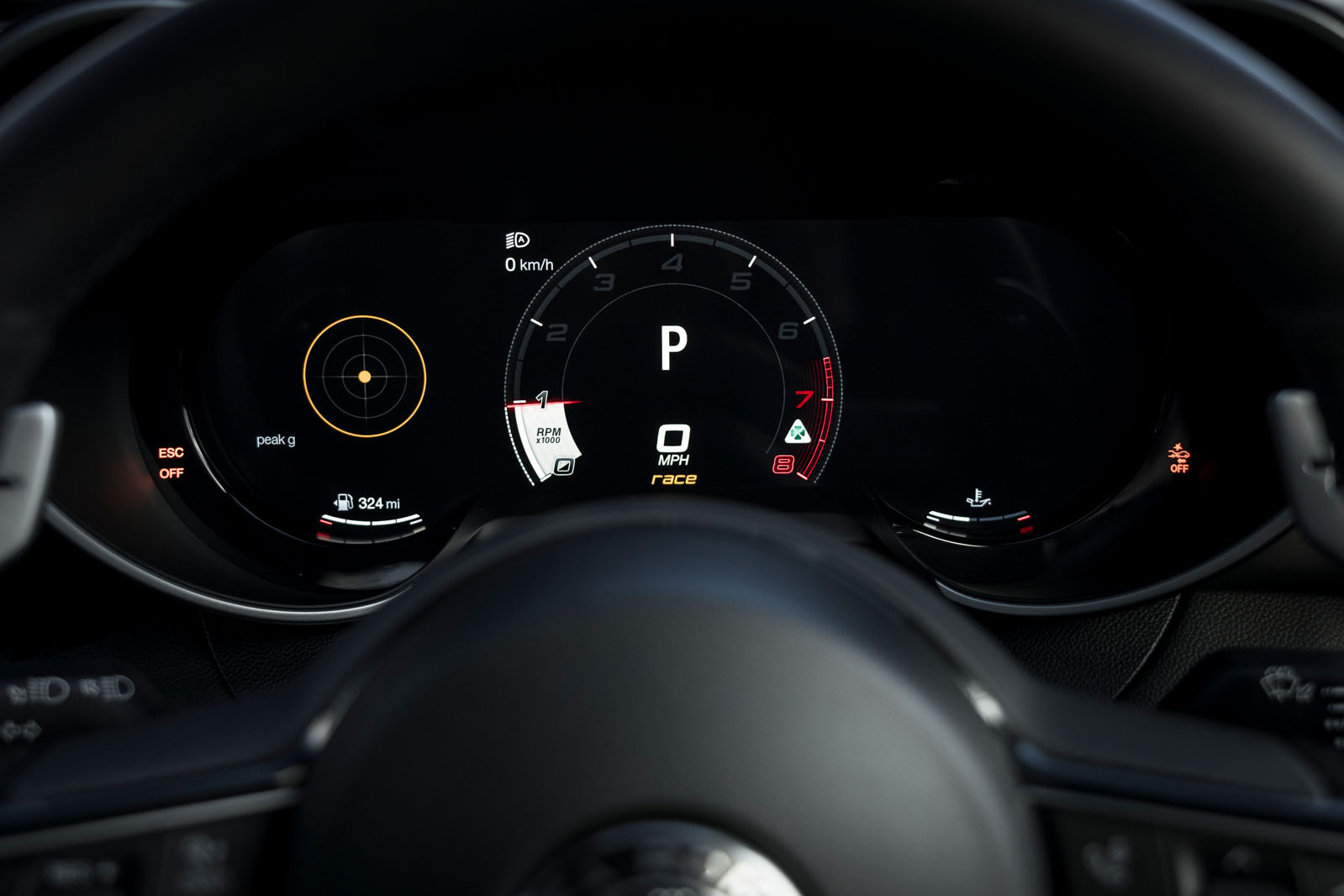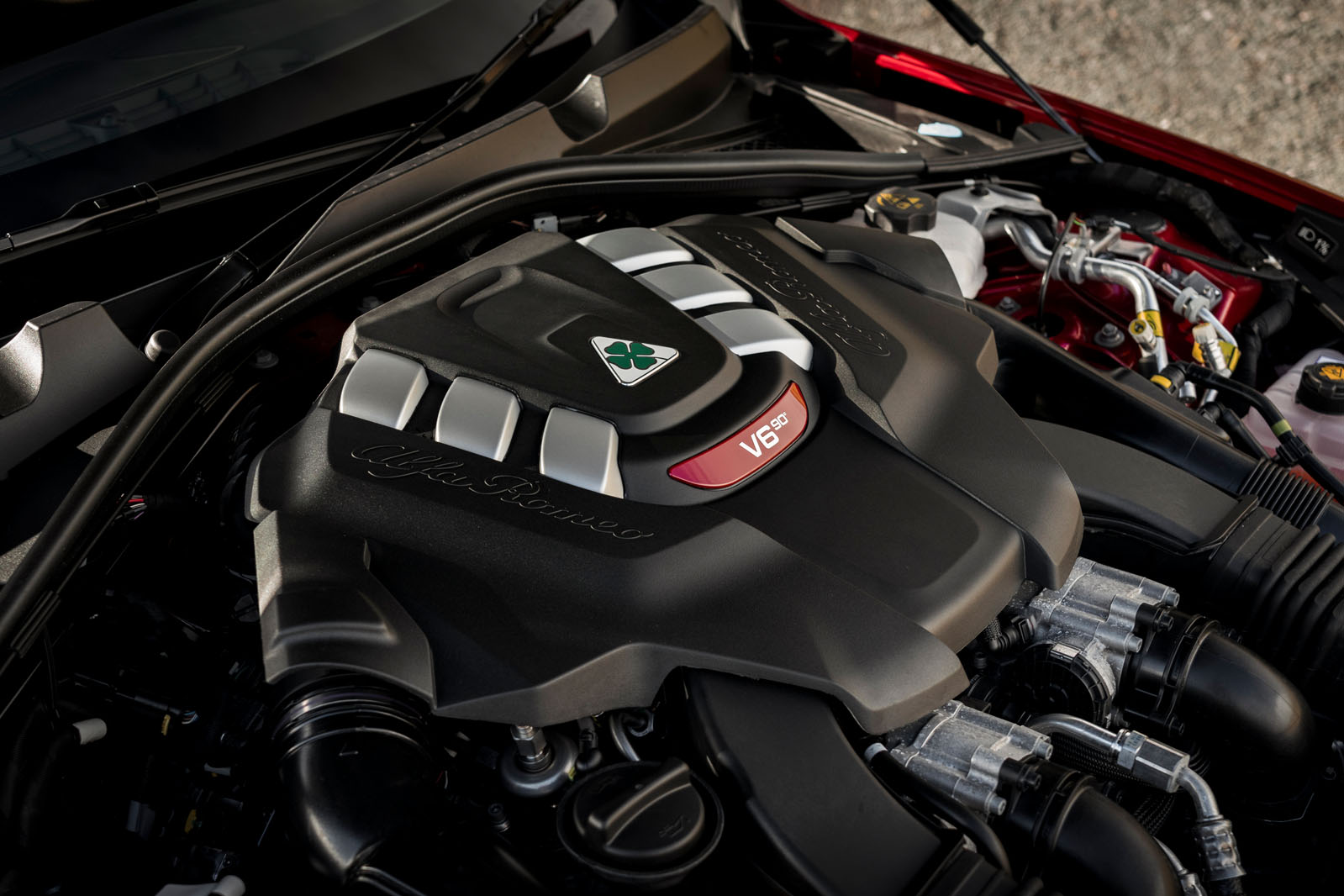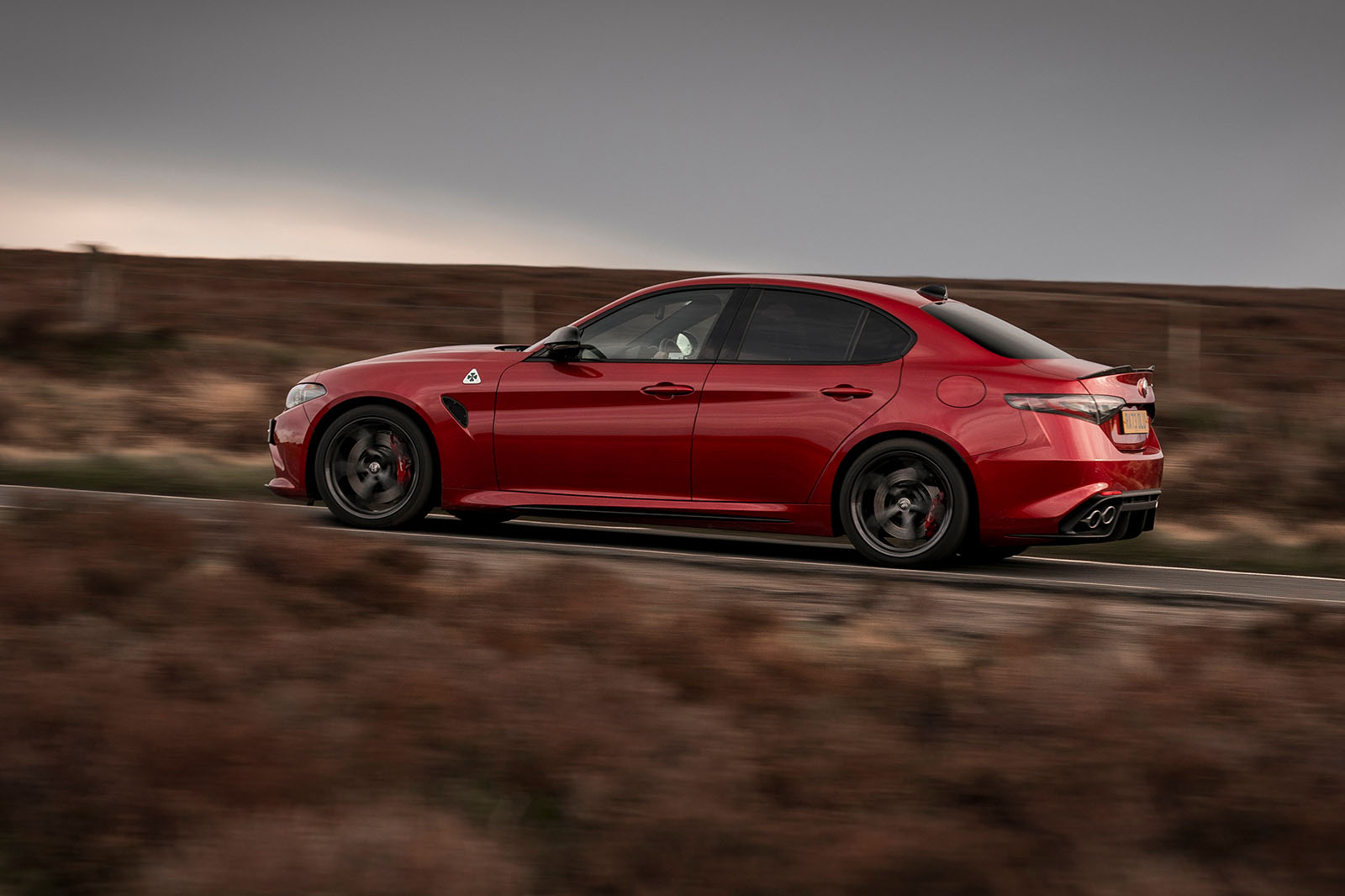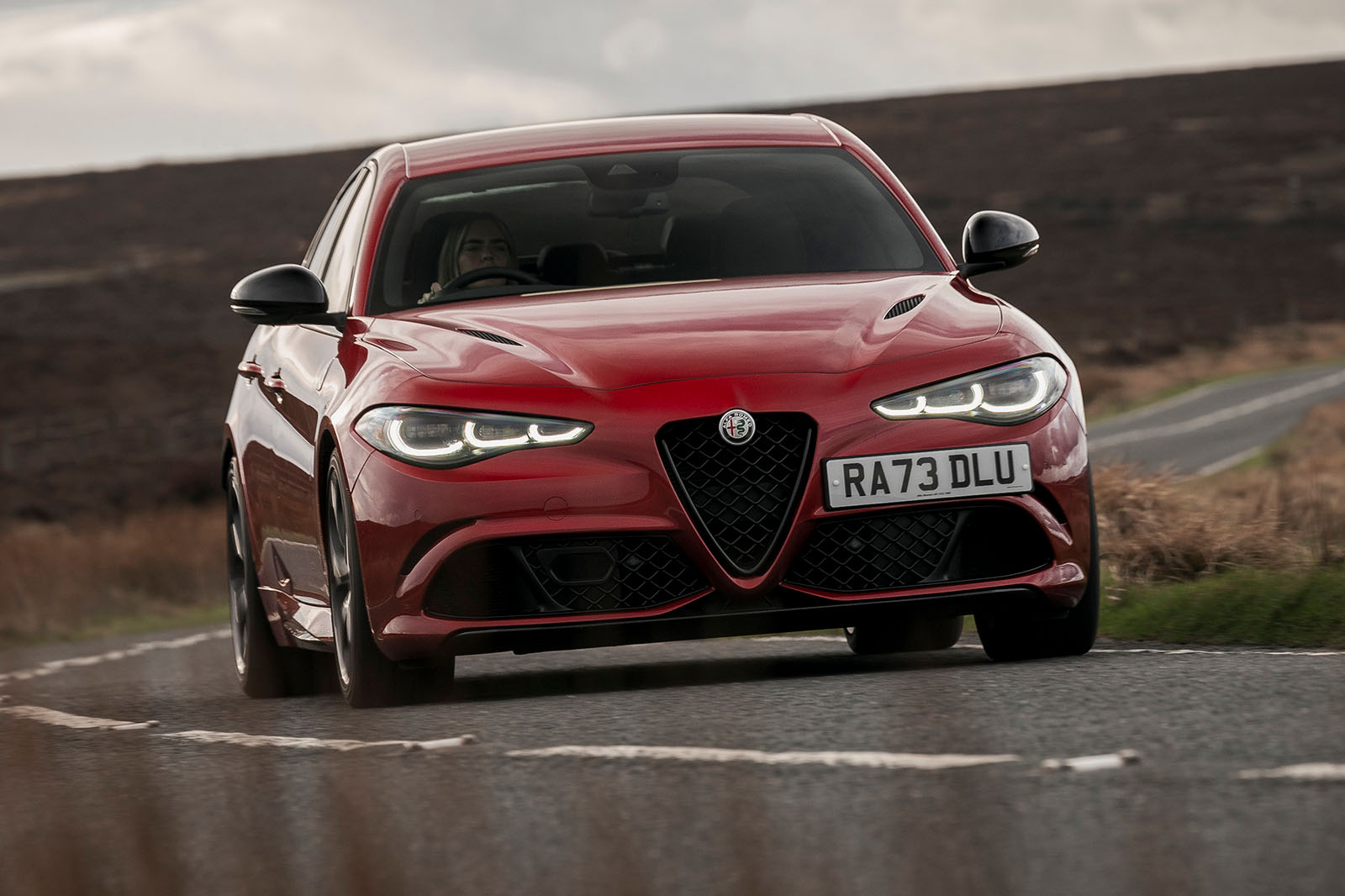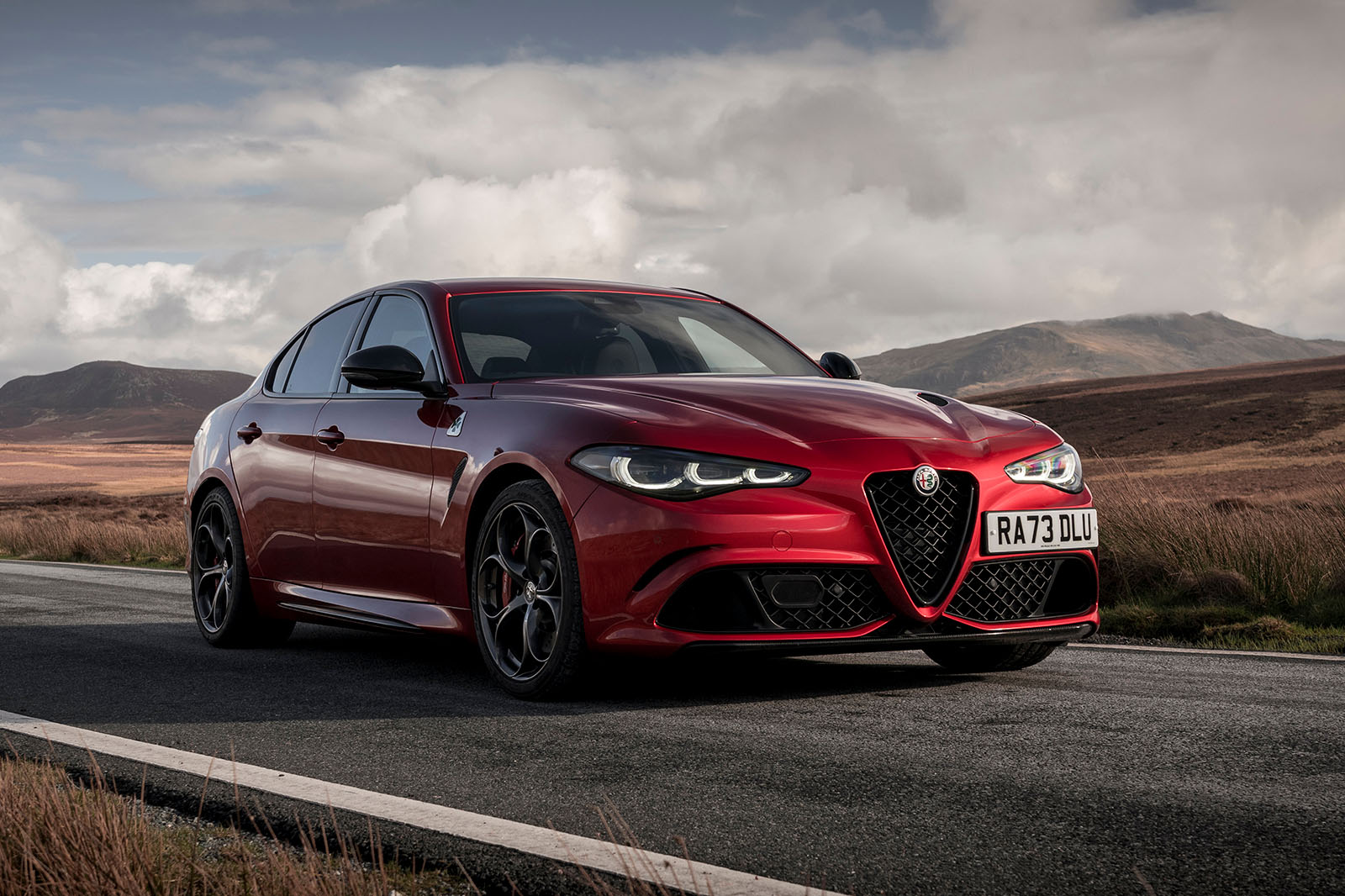Read our full long-term report here
What’s it like to drive day-to-day?
In short, superb. The drive modes really help out with this. For ambling around town, A (advanced efficiency) offers stop/start and a less aggressive throttle mapping.
N (natural) adds slightly more aggressive throttle mapping and is supposed to offer a halfway house between A and D (Dynamic), the mode we spent most of our time in.
The exhaust opens up nicely and the dampers offer a little bit more stiffness. But, importantly, not too much for Britain’s pothole-strewn roads.
R (RACE) deactivates the stability controls. This is primarily aimed at track driving but is easy enough to use day-to-day in dry weather in the UK, if you really want to make the most of your 513bhp super saloon.
Was it easy to live with?
It is incredibly easy to live with considering the performance it has. Twenty years ago to get this speed you’d be looking at serious sports car machinery. Whereas now the Alfa could conceivably be your only car.
The ride, with the dampers in their softest setting, is lush at motorway speeds. It’s easy to see out of. There are four doors, and while the rear isn’t the roomiest, it’s good enough for adults. The boot is big enough for a typical small family weekly shopping trip.
Is the infotainment good?
It’s a bit hit and miss. It’s quite old-school and a bit laggy. The MPG read out screens are complex and hard to read.
It also doesn’t have wireless Apple CarPlay/Android auto. Not a huge issue, but rivals do offer it.
What were the running costs like?
Not great. Over 2500 miles, doing a mixture of motorway, b-road and city driving, we averaged 23.5mpg.
Did it break down?
We logged a few faults during our time with the Giulia Quad. They mostly related to warning lights on the dash. And it did fail to proceed twice; once with a dead battery and once relating to a parking brake warning.
Alfa’s technicians have reported that there was an intermittent fault in one of the car’s battery cells. Since then, the car has been fitted with a new battery and the faults have cleared.




